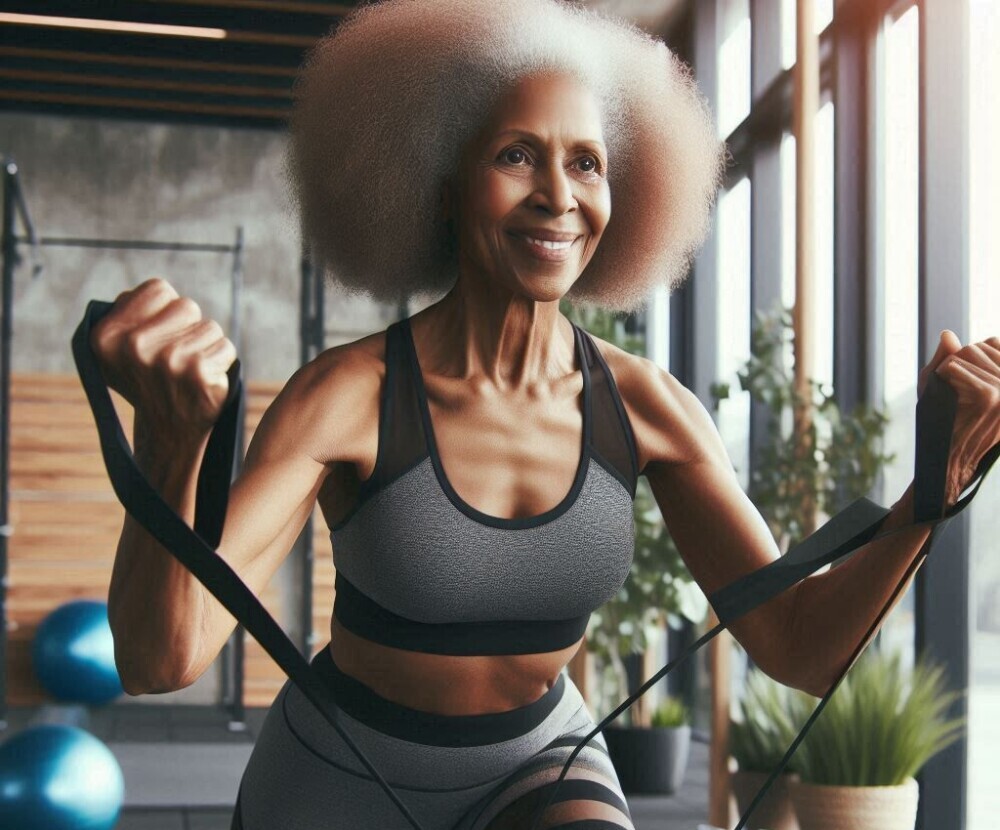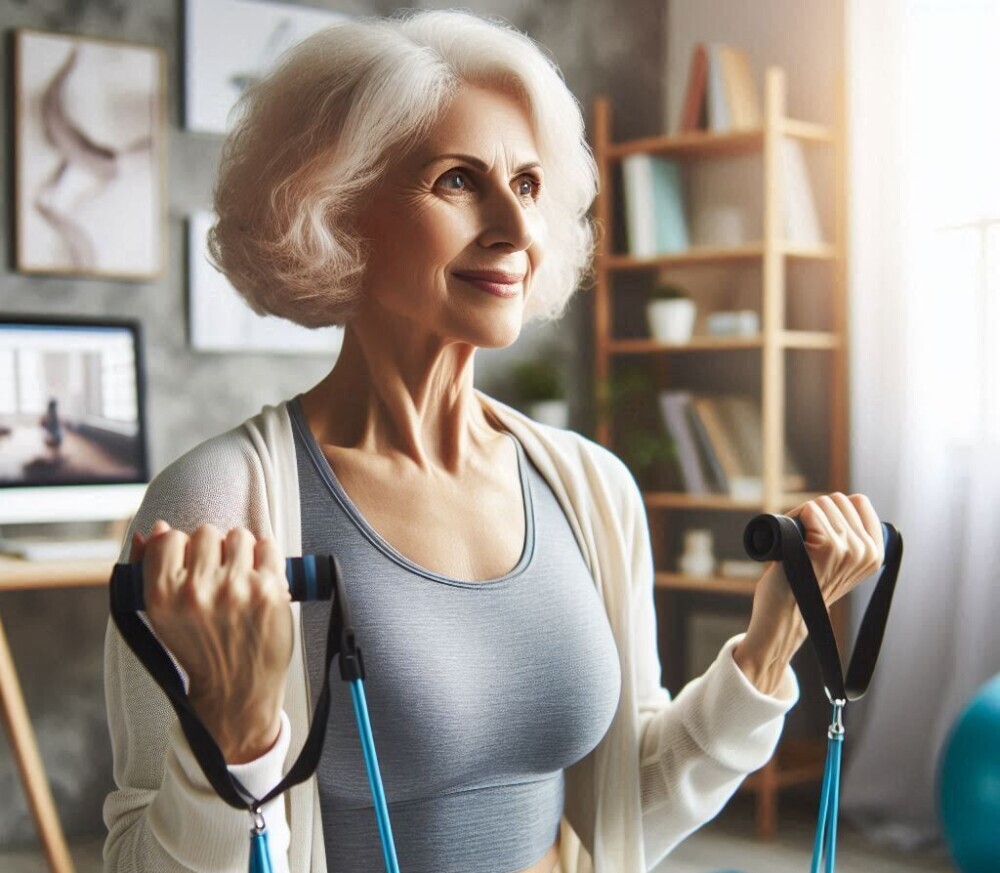
Resistance bands have turned the fitness game on its head. They’re super versatile, making them perfect for low-impact workouts. Unlike traditional weights that can put stress on your joints, these bands let you strengthen muscles without harsh strain. Think of them as the friendliest way to get stronger.
Why are they so popular, you ask? Well, they adapt to nearly any fitness level or goal. Whether you want to tone up, rehab from an injury, or boost your flexibility, they’ve got your back. You can perform a wide range of exercises targeting every muscle group, which is handy because variety keeps things interesting.
One standout feature is the progressive resistance. As the band stretches, resistance increases, which means your muscles are continuously challenged. It’s like having a workout buddy who always knows when to push you a little harder.
You can’t overlook convenience, either. These bands are compact and travel-friendly, so whether you’re at home or on the road, you can stick to your routine. No more excuses to skip your workout. Plus, they don’t require a huge amount of space, which is a win for anyone with limited room.
For seniors and others looking into low-impact training, resistance bands are a game-changer. They let you engage in effective strength training while keeping things light on your body. Whether recovering from an injury or just being careful with your joint health, they provide the perfect balance of challenge and care.
Types and Variations: Which Resistance Bands Are Right for You?
Picking out resistance bands can feel like navigating a rainbow of choices. Each type has its own vibe and specific use. For instance, loops resistance bands are those continuous circles perfect for lower-body workouts, adding just the right amount of challenge to squats and leg lifts.
Then there are therapy bands, usually flat, broad pieces often used in rehabilitation and physical therapy arenas. They’re great for folks easing back into exercise or healing from injuries.
Tube bands offer a resistance band with handles, which is a big plus for upper body work. They mimic gym machines without the hefty price tag or floorspace. They are solid for exercises like bicep curls and chest presses.
But how do you pick the right resistance bands for low impact training for seniors? Consider resistance levels, often categorized as light, medium, or heavy. Beginners might kick things off with a lighter band to nail down proper form before progressing to something a bit tougher. Meanwhile, seasoned fitness fans might dive straight into heavier bands for a real muscle-burning challenge.
Material matters, too. Latex bands are durable but might not suit everyone with allergies. Non-latex options exist and provide good elasticity while being skin-friendly.
Think about where you plan to use your bands. If you’re mostly homebound, any type will do. But for road warriors, portable and lightweight therapy bands could be your best bet.
Shopping Smart: Tips for Choosing the Best Resistance Bands for Your Needs

Walking into a store or scrolling online for resistance bands can feel overwhelming, but a few smart tips can help you make the right pick.
First, check for grip features. Handles or textured surfaces can keep the bands from slipping during intense workouts. That’s especially handy for exercises that get a little sweaty.
Elasticity is another key player. You want a band that’s got some give but still retains its shape. Flimsy bands will lose tension over time, making your workout less effective.
Length matters when you’re shopping, too. Some moves need a little extra wiggle room, so ensure the bands you choose are long enough for your needs, especially if you’re taller or prefer doing full-body stretches.
Getting into specific brands might also save you some hassle later on. Brands known for quality often back their products with solid warranties, which protects your investment.
Looking at price, it’s tempting to go for the cheapest option. But usually, you get what you pay for. Cheaper bands might save you a few bucks initially, but they could wear out quickly, costing you more in the long run to replace. Spending a little more upfront often means better durability and performance.
Always remember to balance what you need with what you can afford. Checking reviews or asking friends for recommendations can provide extra insight into what’s worth buying. You’ll end up with a set of bands that match your fitness routine and give you plenty of mileage.
Maximizing Your Workout: How to Incorporate Resistance Bands into Your Low-Impact Routine
Resistance bands are like the Swiss Army knife of fitness gear, fitting into any workout you can imagine. Whether you’re into stretching, strengthening, or even some balance work, these bands have your back.
Creating a routine with resistance bands can be an effective way to mix up your usual workout. A good mix of exercises could start with warm-ups using lighter resistance bands for dynamic stretches that prepare your muscles.
Post-warm-up, you could consider jumping into strength moves like resistance band squats or chest presses. These exercises target key muscle groups and add just enough resistance to help build strength without overloading your joints.
If flexibility is a goal, include movements like seated hamstring stretches or overhead triceps stretches. The gentle tension helps enhance flexibility and muscle relaxation, making it a good choice for winding down after a strenuous day.
Don’t forget the bands’ magic in recovery. Light resistance training can aid in rehabilitation post-injury, helping you regain strength and mobility safely. Bands can give those recovering from injury the confidence to challenge their muscles without fear of overdoing it.
Think about structuring a full-body workout using these bands, adding core moves like seated Russian twists or banded standing side crunches. This kind of variety not only amps up your routine but also helps keep your workouts exciting and anything but boring.

Affiliate Disclosure
Here’s a little transparency: Our website contains affiliate links. This means if you click and make a purchase, we may receive a small commission. Don’t worry, there’s no extra cost to you. It’s a simple way you can support our mission to bring you quality affiliate marketing content.

Nigel, thank you for this fantastic guide on choosing resistance bands for low-impact training! As someone who’s been searching for gentle exercise options after a knee injury, I really appreciate how you broke down the different types of bands and their uses—especially the focus on therapy bands for rehab. Your tips on checking for durability and matching resistance levels to my needs gave me the confidence to start incorporating bands into my routine. It’s clear you care about helping people exercise safely, and I’m so grateful for your thoughtful advice!
I loved your suggestion about using therapy bands for stretching and rehab exercises. I’m new to resistance training and a bit nervous about overdoing it—do you have any favorite low-impact exercises or routines for beginners that you’d recommend starting with to build strength safely? I’d really value your insight!
Sincerely,
Steve
Thanks for your supportive comments, Steve.
You might like to have a look at this Guide on how to do band pull-aparts. The guide summarises the muscles that are engaged when you use the bands, the benefits of the exercise and, importantly, it contains a range of short videos you can look at to find band exercises that might be suitable for your own strength recovery following your knee-injury.
Good luck with your low-impact exercises–I hope you quickly get back to the fitness level you’re looking for!